Last updated: September 2025
Securing a car loan can feel like an obstacle course, especially when you’re comparing W‑2 vs. 1099 income documentation in Texas. Texas lenders must verify that you can afford the proposed monthly payment. Whether you’re a salaried employee or an independent contractor, your records must be accurate, complete and easy to review. To keep search intent aligned, this guide uses the exact phrase Texas car loan approval W‑2 vs 1099 where helpful.
The right documents speed approvals; poor scans and missing pages slow them down. Below, we explain what U.S. lenders — with a Texas focus — and their UK and Canadian counterparts look for in W‑2s, 1099s, payslips and T4 slips. We also clarify which edits are lawful, which are not, and how professional formatting helps underwriters verify income without friction.
FinancialDocsProvider.com serves clients across the U.S., UK and Canada by organizing, formatting and enhancing the legibility of the documents you already have. We never change numbers, dates or payees — our role is to package your evidence so underwriters can validate it quickly. This compliance‑first approach has helped many Texas employees, freelancers and newcomers move forward faster.
Related Entities & Terms
- W‑2 (U.S. wage & tax statement), 1099‑NEC/1099‑MISC (U.S. contractor income forms)
- P60, P45 and SA302 (UK year‑end and self‑assessment tax forms)
- T4, T4A and Notice of Assessment (NOA) in Canada
- Bank statements, profit & loss statements, invoices, contracts
- Regulators: Consumer Financial Protection Bureau (CFPB), Federal Trade Commission (FTC), Internal Revenue Service (IRS); Financial Conduct Authority (FCA); Financial Consumer Agency of Canada (FCAC), Canada Revenue Agency (CRA)
- Auto loan concepts: annual percentage rate (APR), down payment, debt‑to‑income (DTI) ratio
- Credit bureaus: Experian, Equifax, TransUnion
- Verification processes: VOE (Verification of Employment), VOI (Verification of Income), Open Banking (UK)
- Document types: pay stubs/payslips, bank statements, tax transcripts, employment letters
- Security concerns: identity theft, data redaction, encryption
The rest of this guide breaks down the legal requirements, allowed edits and best practices for W‑2 vs. 1099 income documentation. Whether you’re applying at a Houston dealership or seeking online financing from Dallas to London or Toronto, you’ll learn how to package your financial story legally and effectively.
What are the legal basics of car loan income documentation in Texas?
Income verification is required across major lending markets. Texas lenders follow federal rules and standard underwriting practices. Knowing what underwriters expect helps you submit a clean, decision‑ready file.
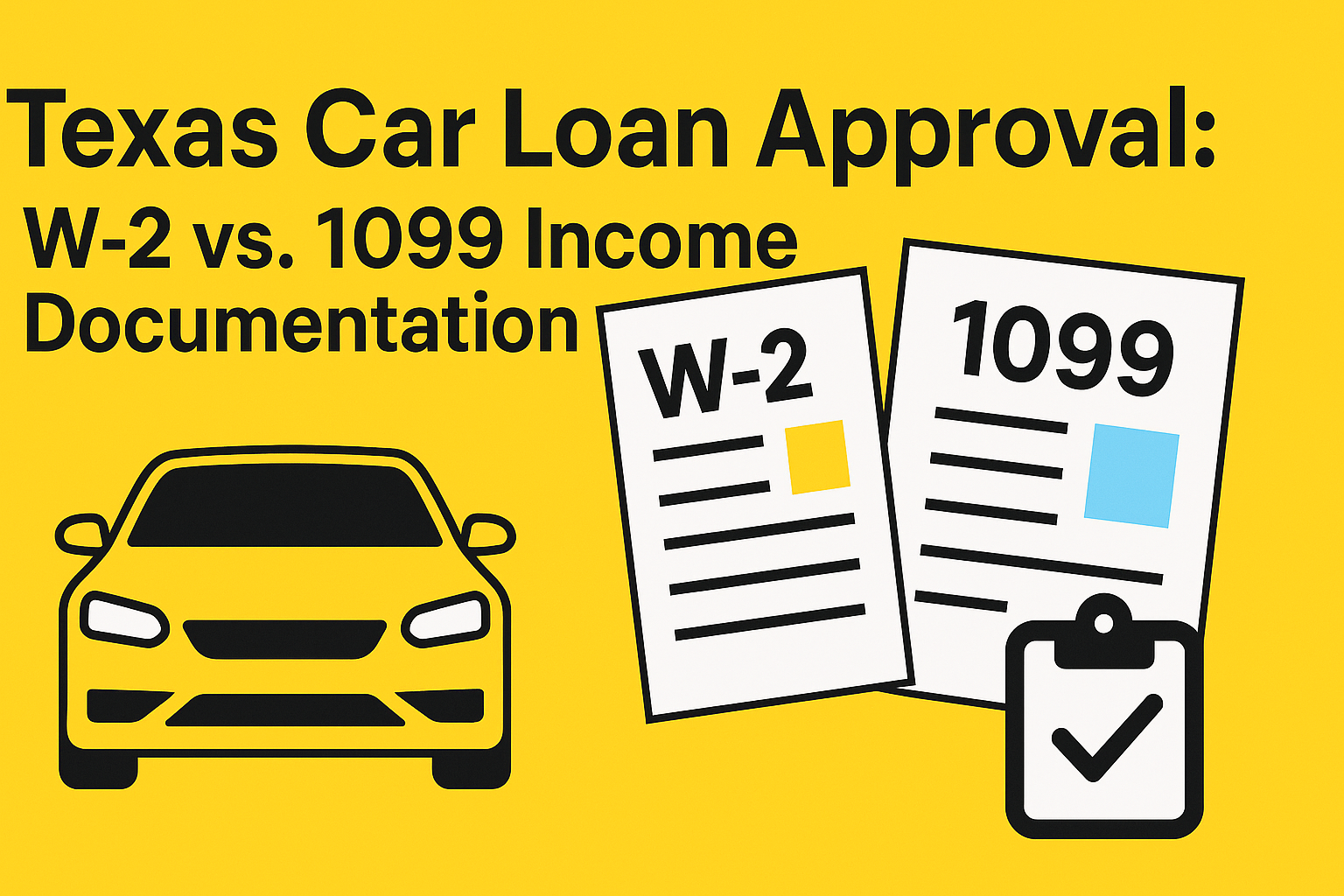
Texas lenders follow federal guidelines when verifying income, but local nuances matter. This section summarises what’s required in the US, UK and Canada and explains why presenting accurate documents is non‑negotiable.
Under U.S. law, auto lenders must verify income before financing a vehicle. The Consumer Financial Protection Bureau notes that lenders typically request recent pay stubs, W‑2 statements for the last two years, signed tax returns, bank statements and documentation of other income sources. For salaried employees, the W‑2 summarises total wages and taxes withheld; lenders compare it with current pay stubs to confirm year‑to‑date earnings. Freelancers and contractors receive 1099‑NEC or 1099‑MISC forms from each client who pays them at least US$600, and lenders review six to twelve months of bank statements and profit‑and‑loss reports to gauge consistency. The IRS requires employers to file W‑2s and 1099 forms with the Social Security Administration and the IRS by January 31 each year, ensuring tax forms are ready when lenders request them.
In Texas specifically, there is no state income tax. A W‑2 may therefore list only federal withholding and Social Security and Medicare contributions. Underwriters still expect consistent earnings and may request employment letters or bank statements to cross‑check income when state tax lines are absent. Failure to supply accurate W‑2s or 1099s slows approval.
UK lenders ask for payslips (typically three months), a P60 year‑end summary or SA302 tax calculation, and bank statements. The UK’s GOV.UK guidance explains that your P60 shows the tax you’ve paid on your salary; you may need it as proof of income when applying for a loan. If you cannot get a P60, you can obtain the same information from HMRC’s online account. Canadian lenders rely on T4 or T4A slips and may request a Notice of Assessment (NOA). The Canada Revenue Agency notes that a proof of income statement summarizes your income and deductions and is often used when you apply for a loan.
Across all jurisdictions, authenticity is critical. The Federal Trade Commission has prosecuted companies that sold “authentic fake” pay stubs and bank statements. One case described how fake‑paystub websites offered customised W‑2s and 1099s; the FTC alleged that these operations sold documents used to commit identity theft and loan fraud. Such enforcement actions show the consequences of falsifying income records. Lenders may verify information directly with employers, banks or tax authorities, and altering numbers or dates can lead to denial or criminal charges.
Practical tip: expect lenders to validate your debt‑to‑income ratio, employment stability and cash‑flow consistency. In Texas, some lenders also confirm insurance and lienholder details before funding. By understanding these basics, you set a strong foundation for a fast, compliant decision.
Which edits are allowed on W‑2 and 1099 documents?
Not all edits are equal. Some adjustments improve readability and protect privacy; others cross the line into fraud. Below are permissible edits that help underwriters review your income documents without altering any facts.
Formatting and readability improvements are legal when they do not change the underlying data. You may redact sensitive identifiers, fix scanning issues and organise files into one clear packet. These enhancements improve review speed and limit exposure of personal information.
- Redact personal data. Blur or black‑out your Social Security number, National Insurance number or Social Insurance Number to prevent identity theft. Do not remove any financial figures; only hide identifiers.
- Fix formatting issues. Rotate scanned pages, straighten crooked lines, enlarge small text and convert photos into clean PDFs. Sort multi‑page statements chronologically and add bookmarks for simple navigation.
- Annotate key figures. Use subtle highlights or boxes around gross pay, year‑to‑date earnings or deposit amounts to guide underwriters. Avoid commentary that could be mistaken for edits.
- Consolidate documents. Merge W‑2s, pay stubs, 1099s and bank statements into one labelled PDF. Ensure each page contains the complete, unaltered original information.
- Provide certified translations. If a document is in another language, attach a certified translation with the original. This supports accuracy and meets lender requirements.
- Preserve file integrity. Export final packets to PDF. Avoid aggressive compression, page cropping or filters that damage legibility. Keep filenames consistent and version‑control your packet.
These edits make your packet professional and easy to verify. Texas underwriters appreciate tidy, consistent records; messy scans or inconsistent formatting slow local credit committees. If you lack the software or time, our team can help with proof of income editing and bank statement formatting. We never change numbers or dates — only enhance clarity.
What alterations are illegal and why?
Falsifying income documentation is more than unethical — it is often criminal. The changes below cross the line and can trigger denials, investigations or prosecution.
Any change that misrepresents facts can constitute fraud. Auto lenders verify income by comparing your documents with employer records, tax transcripts and bank data. If discrepancies appear, your application can be denied and you may face fines or prosecution. The FTC’s actions against fake‑paystub vendors show that producing or using fraudulent documents is illegal.
- Changing amounts. Inflating wages, bonuses or contract income to qualify for a larger loan is fraud. Erasing deductions or taxes to boost net pay is also illegal and usually detected.
- Backdating or fabricating pay periods. Modifying dates on pay stubs or bank statements to show continuous employment or steady deposits misrepresents your history.
- Inserting fictitious employers or clients. Creating a fake company name or employer on a W‑2 or 1099 is illegal. Employer identification numbers are cross‑checked, and lenders often request verification letters.
- Altering tax forms. Modifying a W‑2, 1099, P60, SA302, T4 or NOA by changing wages or taxes withheld is tax fraud and can lead to penalties. Employers must file these forms by January 31 each year; forging them undermines the system.
- Combining numbers from different people. Mixing a partner’s income into your pay stub or copying someone else’s bank statement violates privacy laws and misrepresents finances.
Penalties vary by jurisdiction. In the U.S., violations may involve the FTC, IRS or Department of Justice. In the UK, the FCA enforces the Fraud Act. In Canada, the FCAC and CRA treat forgery seriously. Even if you obtain a loan using fake documents, discovery can lead to rescission, damaged credit and legal consequences.
Focus on authentic, well‑organized records. If your income is complex or variable, professional formatting helps tell a clear story without crossing legal lines. That approach protects you and accelerates underwriting.
When do you need professional document formatting?
Many borrowers can compile a basic income file on their own. Complex income, multiple sources or cross‑border moves often benefit from professional support.
Straightforward cases may require two or three recent pay stubs and last year’s W‑2. Complex earnings, variable income or international histories often benefit from professional presentation. Below are common use cases and Texas‑specific examples.
Salaried employee with overtime and bonuses
Maria, a technology worker in Austin, earns a base salary plus quarterly bonuses. Her lender asks for her last two pay stubs, last year’s W‑2 and evidence of bonuses. We organise the stubs in order, highlight bonus amounts and combine them with her W‑2 in one packet. This clear presentation reduces questions and speeds approval.
Freelancer receiving multiple 1099s
Ramon is a graphic designer with several 1099‑NEC forms from different clients. Because his income fluctuates, the lender requests twelve months of bank statements, a profit‑and‑loss statement and two years of tax returns. We cross‑reference each 1099 with matching deposits, annotate statements with invoice numbers and compile his Schedule C. The reconciliation supports a favourable decision.
Small‑business owner or partner
Priya owns a consulting firm with salary, dividends and P60/SA302 forms. UK lenders may struggle to interpret these sources. Our team produces a consolidated packet with brief explanations and translations where needed, ensuring each amount ties back to official filings.
Cross‑border and newcomer applicants
Alex relocated from Toronto to Houston on a work visa. He must provide Canadian T4 and NOA documents alongside new U.S. W‑2s and pay stubs. We combine his Canadian and U.S. forms, add certified translations and highlight currency conversions. British expats in Texas face similar complexity when they must supply both P60 and T4A slips.
Other scenarios include seasonal work, tips‑based income and multiple part‑time roles. In Texas, oilfield workers may receive both W‑2 wages and 1099 payments. Rideshare drivers, travel nurses and sales professionals with commissions also benefit from clear reconciliation. The principle is simple: every number must trace back to an authoritative source. Our financial document services and pricing pages show how we tailor support.
How does our process work?
We operate a structured, compliance‑first workflow that prioritizes accuracy, privacy and speed. Our team reconciles figures, improves legibility and assembles a lender‑ready packet — without changing facts. Here’s what to expect from intake to delivery.
- Initial consultation. Submit a secure request via our contact form or live chat. We discuss your employment status, lender requirements and jurisdictions involved.
- Document intake and reconciliation. Upload pay stubs, W‑2s, 1099s, tax returns, bank statements and any other relevant files. Our team cross‑checks that numbers reconcile across sources — for example, total wages on your W‑2 should match the sum of your pay stubs.
- Formatting and redaction. We clean up scans, add bookmarks, redact sensitive identifiers, annotate key figures and assemble a cohesive PDF packet. For self‑employed clients, we align invoices and 1099s with bank deposits to show consistency.
- Final review and delivery. After quality checks, we deliver your organised proof‑of‑income packet via encrypted download link. Our typical turnaround time is 24–48 hours, depending on document volume. If the lender asks for more detail, we offer limited revisions at no extra cost.
Security matters. We use encryption for file transfers, limit retention, and restrict access to essential personnel. Throughout, we enhance clarity and completeness, but we never fabricate numbers or change dates. For broader needs — like bank statement formatting or support for rental or SBA packages — we can bundle services.
What should your compliance checklist include?
A thorough package reduces back‑and‑forth and underwriting delays. Use this checklist before you apply for a car loan in Texas or elsewhere. Add items that fit your exact situation.
- Employment verification. Two to three recent pay stubs, an employment letter with role, salary and start date, plus W‑2s for the previous two years. In the UK, include payslips and a P60 or P45; in Canada, provide T4 or T4A slips.
- Tax forms. W‑2 (U.S.), P60/P45 (UK), T4/T4A (Canada) and, for the self‑employed, 1099s, SA302s, NOA and business tax returns. Employers must file W‑2 and 1099 forms by January 31, so anticipate early‑year requests.
- Bank statements. Provide at least three to six months of statements so the lender can see consistent deposits. With irregular income, submit up to twelve months.
- Profit & loss statements or accounts. Self‑employed borrowers should include a year‑to‑date P&L and, where applicable, a balance sheet.
- Additional income proof. Side income, alimony, child support, rental income or dividends require official paperwork such as award letters, leases or 1099‑DIVs.
- Identity and residence documentation. A government‑issued ID (driver’s license or passport) and proof of address (utility bill or lease). Some lenders also ask for proof of insurance.
- Cross‑border documentation. If you recently moved, include immigration documents (visa or work permit) and translations of foreign income documents.
- High‑quality digital copies. Use high‑resolution scans, label files clearly (e.g., “2025‑04 Pay Stub – Employer Name”) and confirm totals reconcile across forms.
- Texas practicals. If applicable, gather insurance binders, lienholder details and proof of down payment. These items can be requested before funding.
By following this checklist, you’ll help underwriters verify information quickly. Our financial document services can assist if you need help assembling or reconciling the packet.
What red flags cause document rejection?
Underwriters look for consistency, completeness and legibility. The issues below raise doubts and can derail approvals. Review them before you submit.
- Mismatched information. Names, addresses or dates that differ across documents raise questions. If your payslip lists a different address than your bank statement, provide an explanation or proof of a recent move.
- Inconsistent earnings. Large income swings without context prompt extra requests. Include an invoice or brief note explaining big commissions or irregular contract payments.
- Poor formatting. Blurry scans, cut‑off pages or overlapping text make verification harder. Clear, legible documents convey professionalism and speed approval.
- Missing pages. Omitting pages of a bank statement or tax return suggests you’re hiding something. Include full statements, even if some pages are blank.
- Editing artefacts. Uneven fonts, misaligned numbers or different paper backgrounds can signal manipulation. Maintain the original look and feel of your documents.
- Unverifiable employers. If your employer or client can’t be found online or doesn’t return calls, lenders may question the income. Provide accurate contacts and be ready with additional proof.
- Cash‑only patterns. Heavy cash deposits with no invoices or logs are hard to verify. Link deposits to contracts or itemized receipts.
- Rounded numbers. Repeated, perfectly rounded amounts may look manufactured. Show the actual figures from source documents.
Perform a pre‑submission review to catch these issues. Our specialists are trained to spot inconsistencies and help you address them before your packet reaches the underwriter.
Where can you find official resources and further reading?
Use authoritative sources to understand your rights and obligations. The links below include government guidance and related internal articles for deeper context.
- United States: The Consumer Financial Protection Bureau’s Ask CFPB explains how lenders evaluate income and offers tips for preparing a loan application. See their guidance on creating a loan application packet, which lists pay stubs, W‑2s, tax returns and bank statements.
- Canada: The Canada Revenue Agency’s proof of income statement page describes how to obtain your NOA and when lenders may ask for it.
- United Kingdom: The GOV.UK guide on P60s explains that your P60 shows the tax you’ve paid and is useful as proof of income when applying for a loan.
- FTC Enforcement: The Federal Trade Commission’s article on “Authentic fake” pay stubs highlights cases against companies that sold fake financial documents. It underscores the importance of authenticity.
- Internal articles: Read our guide on proving income for a car loan, our self‑employed car loan article, and our piece on cross‑checking pay stubs and bank statements. These articles offer scenarios, checklists and compliance tips for various profiles.
- Services and pricing: Learn about our proof of income editing and bank statement formatting services. For cost details, see our pricing page. If you have questions, contact our team.
Staying informed ensures you meet requirements and avoid missteps. Bookmark these resources as you gather your documents.
Frequently asked questions
Do I need both pay stubs and W‑2s when applying for a car loan in Texas?
Most U.S. lenders ask for recent pay stubs plus your most recent W‑2. The stubs show current earnings while the W‑2 verifies last year’s wages and taxes. In Texas, where there is no state income tax, the W‑2 may list only federal deductions, but underwriters still expect it. Always follow your lender’s instructions, and provide payslips and P60s for the UK or T4 slips for Canada as applicable.
How do freelancers and 1099 contractors prove income for auto finance?
Lenders look at bank statements, 1099 forms, invoices and tax returns. Self‑employed borrowers often must provide six to twelve months of bank statements, recent tax returns including Schedule C, and a profit‑and‑loss statement. Ensure all documents reconcile across sources, and consider professional help to organise them.
Are digital copies and e‑signatures acceptable?
Yes. Most lenders accept scanned PDFs or digital statements if they are clear and unaltered. Electronic signatures on employer letters are generally fine if verifiable. Avoid low‑resolution screenshots and include every page of each statement.
What if I have multiple jobs or side gigs?
Provide proof for each income source. Attach pay stubs from your primary employer, 1099s from clients and bank statements showing deposits. Clearly label each document and include invoices or contracts where relevant. Lenders will aggregate verified income when calculating your debt‑to‑income ratio.
Can I include other household income, like my partner’s wages?
Joint applications are common. If you apply together, submit separate proof of income for each applicant. Never mix your partner’s income into your documents; keep them separate and complete. Each applicant must meet their obligations and sign the agreement.
Need accurate, reliable financial documents fast? Contact FinancialDocsProvider.com now.
About the author: This article was prepared by the editorial team at FinancialDocsProvider.com. Our compliance specialists and financial editors have decades of experience helping clients compile professional proof‑of‑income packets for loans and rental applications. We adhere to a strict policy of formatting and organisation—we never create or alter financial facts. Learn more about our process.
FAQ Copy Block for Rank Math

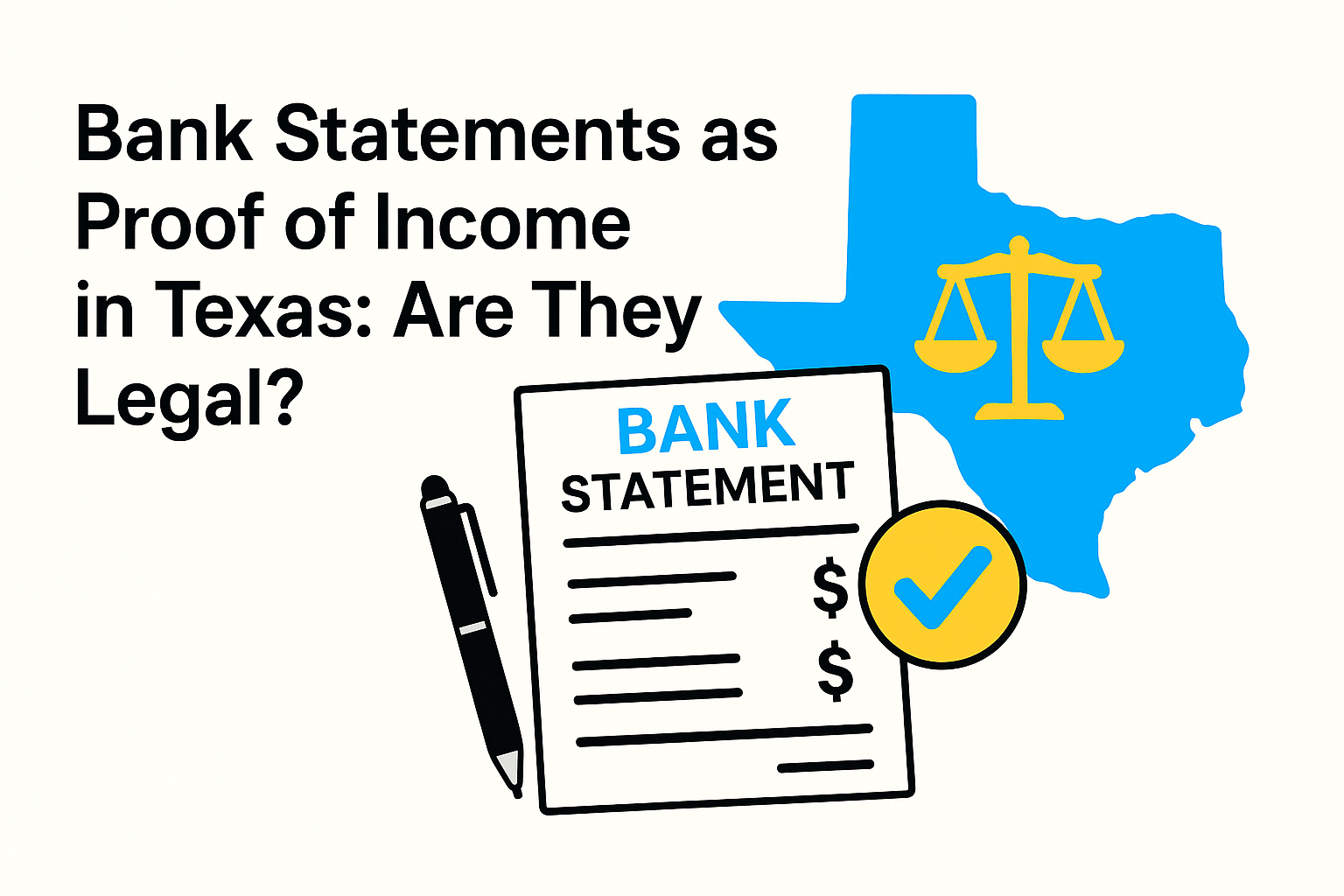

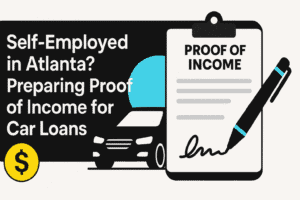
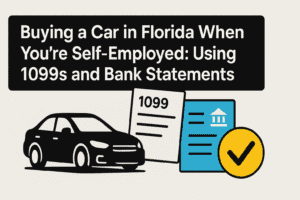

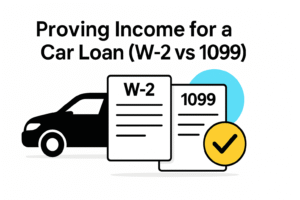

Add comment